Photographs: Alessandro Bianchi/Reuters
Get Ahead reader Aruni Mukherjee, who recently visited Rome, is already contemplaing his next visit. "I could visit Rome a hundred times and not get enough of the city," he says.
Some 2,000 years ago a young Jewish preacher asked some of his closest disciples, "Who do you say that I am?" One of the disciples answered, "You are the Son of the living God."
In response, the preacher uttered perhaps the most fabled sentence in religious history, "Upon this rock I shall build my church, and the gates of Hell will not prevail against it."
The preacher of course was Jesus, and his rock was Simon Peter.
Some 64 years after the crucifixion of Christ, Peter was to meet the same fate as so many of his fellow early Christian preachers. However, when the Roman authorities proceeded to crucify him, he requested that he be crucified upside down -- he didn't feel worthy of dying in the same manner as the Saviour.
His last request was granted, and on the site of his martyrdom now stands the largest church in the world -- St Peter's Basilica.
PHOTOS: Exploring the Eternal city of Rome
Image: Saint Peter's Square is seen from the dome of Saint Peter's Basilica at the Vatican.Photographs: Eric Gaillard/Reuters
St Peter's attracts millions of visitors to Rome each year, with Renaissance masterpieces by Michaelangelo and Bernini adorning the square as well as the inside of the Basilica. However, it is not the only draw that brings tourists and pilgrims alike to the Eternal City.
For me, the thing that is absolutely at the heart of Rome is the story of early Christians not only struggling to make their mark on the imperial capital, winning new converts and suffering the persecution of Rome's elite, but also furiously adapting local customs in order to make it easier for the converts to get used to life under one God, one Christ and one church.
PHOTOS: Exploring the Eternal city of Rome
Image: The obelisk (R) is seen near Saint Peter's Basilica, both of which play a part in novelist Dan Brown's book Angels & Demons, at the Vatican May 1, 2009.Photographs: Chris Helgren/Reuters
Take for instance, the ancient Egyptian obelisk, normally seen in the north African desert, smack down in the middle of St Peter's Square. What is it doing there?
In its 4,400 years of existence, it was moved to Rome by the degenerate emperor Caligula who had it placed at the centre of the Circus of Nero where several early Christians -- including St Peter -- were executed.
Instead of demolishing this mark of imperial Rome's intolerance, successors of St Peter built a church on the site -- a theme of continuity that runs through Rome.
PHOTOS: Exploring the Eternal city of Rome
Image: Queen Sonja of Norway walks in central Rome with the ancient Pantheon in the background.Photographs: Reuters
Many visitors to Rome naturally and incorrectly assume that just because St Peter's is one of Catholicism's holiest shrines (second perhaps only to the Church of the Holy Sepulchre in Jerusalem where Jesus is said to have been buried), it is also the oldest church in town.
Technically though, St Peter's isn't even the parish church of the Bishop of Rome (better known as the Pope) and it most certainly is not the oldest church in Rome.
That accolade belongs to the round church in the centre of Rome (St Peter's and Vatican City are outside the city walls) -- Pantheon -- originally built as a temple celebrating the powers and virtues of the gods of ancient Rome during the reign of Emperor Augustus, later rebuilt by Emperor Hadrian.
PHOTOS: Exploring the Eternal city of Rome
Image: Newly elected Pope Francis I, Cardinal Jorge Mario Bergoglio of Argentina, leads a a mass with cardinals at the Sistine Chapel, in a picture released by Osservatore Romano at the Vatican March 14, 2013.Photographs: Osservatore Romano/Reuters
Rome is not just about religion and sacred monuments, both pagan and Christian (although the Colosseum is probably not what you call 'sacred', the gladiators would certainly not have seen it that way). At every via there is a reminder that this was once the seat of ultimate political power on earth.
Visitors queue for hours to admire Michaelangelo or Botticelli's frescos in the Sistine Chapel (adjacent to the Apostolic Palace -- the Pope's formal residence) but lest we forget, the chapel is also the location for the conclave, most recently earlier this year, when the cardinals of Peter's ministry cut themselves off from the rest of the world (no phones or televisions allowed inside during conclave) and deliberate on who should be the next vicar of Christ, God's representative on earth, the occupant of the world's most powerful religious office, the shepherd to a flock of one billion Catholics worldwide.
There is a big slab of marble inside one of the numerous chapels inside St Peter's that lists all the Popes that there have been -- all the way back to Simon Peter himself.
Continuity, yet again -- Rome just doesn't do clean breaks.
PHOTOS: Exploring the Eternal city of Rome
Image: The statue of the Christ is seen in front of the dome of Saint Peter's Basilica at the Vatican.Photographs: Christian Hartmann/Reuters
There is a festival in Rome that involves thousands of faithful carrying statues of the Virgin Mary aboard boats on the Tiber as part of a religious procession. I never quite got to the bottom of this ritual from a Christian standpoint, however, I do know that the pagans followed a very similar ritual for one of their ancient goddesses.
Then there is the big one -- most ancient texts estimate Jesus's date of birth to be between 7 and 2 BC, although in 4th century AD the Western church came out with the specific date of December 25 (later adopted by the Eastern church headquartered at Constantinople, or Istanbul) despite the Bible being silent on the matter.
It is suggested that in order to placate the newly converted pagans for whom the celebration of the Sun around the time of winter solstice was a big event in the calendar, Christ's "birthday" fell conveniently on December 25.
Many puritans and almost all of the Eastern Orthodox church do not celebrate this date for this very reason -- they prefer to rely on "best guesses" as per the scriptures (7 January, according to some) rather than take the Catholic church's word for it.
Whatever the deliberations, I find this wonderfully fascinating about Rome, which, much like India, prefers to ameliorate cultures rather than destroy and impose. Each time I enter a Catholic church anywhere in the world, countless statues of Christ, the Virgin Mary or the apostles remind me of Rome's ability to assimilate various traditions into its fold -- no wonder many Protestants accuse Catholics of throwing a sop to idol worshippers and pagans.
PHOTOS: Exploring the Eternal city of Rome
Image: Pope Francis gestures as he arrives to lead his Wednesday general audience in Saint Peter's Square at the Vatican June 5, 2013.Photographs: Max Rossi/Reuters
The pagans used to have a high pontiff which sounds similar to the concept of 'Il Papa' for Catholics, or 'Pope' as us English speakers say.
Every Wednesday St Peter's Square is swarming with thousands of pilgrims, some queuing from 6 am for the general audience with the Pope that starts at 10:30 (essentially, morning prayers delivered in a number of languages, given the number of nationalities usually in audience).
Crowds go into frenzy when the Popemobile takes the pontiff around the square where he stops, waves at people, picks up children from the crowd and blesses them before arriving at the podium. Getting tickets for the audience is not very difficult, although I know of an Indian couple who enlisted the help of an Indian trainee priest at the Vatican to secure 'special' passes to the podium where the Pope sits within earshot of the attendees.
Oh how smug they must have been whilst brandishing their passes at the stone-faced and fanatically devoted Swiss guards who guard the Leonian walls of the Vatican! All this to get a closer look at the Fisherman's Ring.
PHOTOS: Exploring the Eternal city of Rome
Image: Dancers perform in front of the Colosseum in downtown Rome June 15, 2013.Photographs: Max Rossi/Reuters
I could visit Rome a hundred times and not get enough of the city. But I would never say "I could live in Rome". I couldn't.
To be honest, I don't much like the modern Rome. At the airport you're greeted by touts offering various services, taxi drivers quote different fares depending on whether you're a first time visitor, and public transport can be patchy and not-very-value-for-money.
Properties are cramped, dated and overpriced and the food experience depends on whether you stumble across one of the little culinary gems scattered across the city or whether you get taken in by one of the overpriced joints targeting tourists, serving pizza that, I am ashamed to say, is topped (sorry for the pun) by Dominos or Pizza Hut back in London.
Garbage litters many streets, and the hawkers do not add to the ambience and the driving is like Chandni Chowk or Churchgate during rush hour -- mad, bad and disorganised.
PHOTOS: Exploring the Eternal city of Rome
Image: Pope Francis visits the Vatican Necropolis below the Saint Peter's Basilica at the Vatican April 1, 2013.Photographs: Osservatore Romano/Reuters
Thankfully though, Rome has a split personality -- and I prefer the city of Caesars and Popes, of gods and saints, the city of empire, the city of a fledgling religion and how it fought its way to become the religion of Emperor Constantine, and through him of the Roman Empire and the world.
If nothing else, I always keep looking forward to my next visit to Rome because there is always something I have not yet done that I would love to do -- next time I intend to visit Necropolis (city of the dead), deep inside the Vatican grottoes, where Popes and Kings from a bygone era live in their peaceful afterlife, and pray at the tomb of the first Pope -- St Peter.

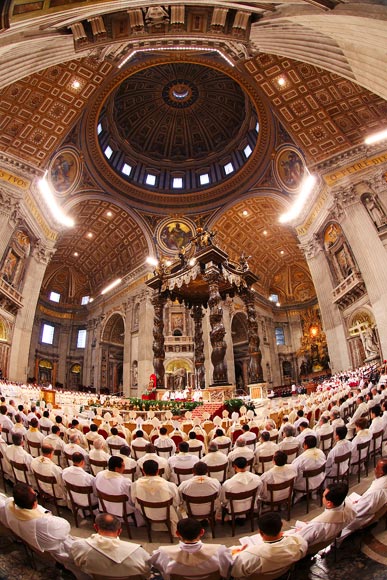
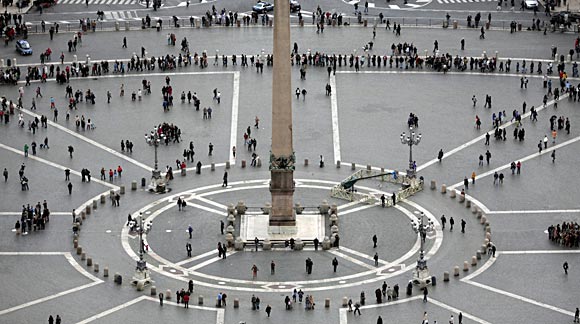
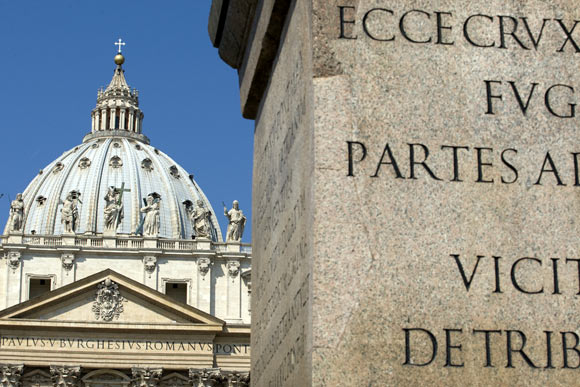
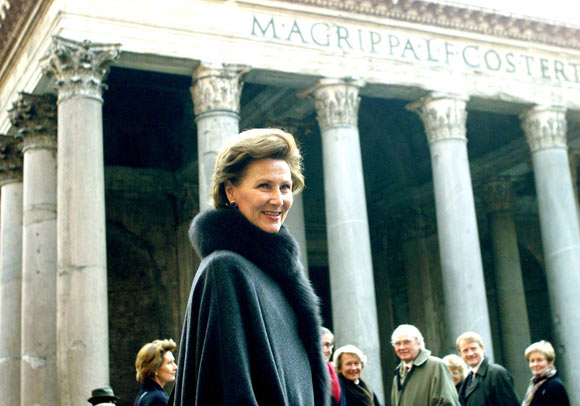

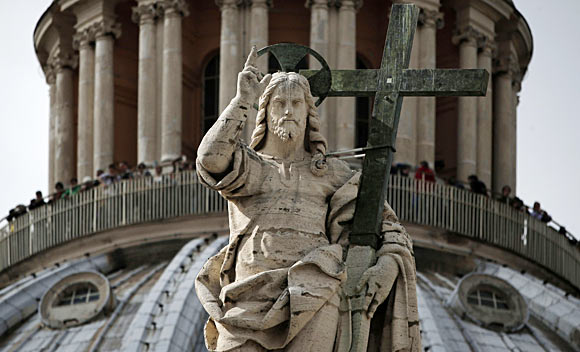
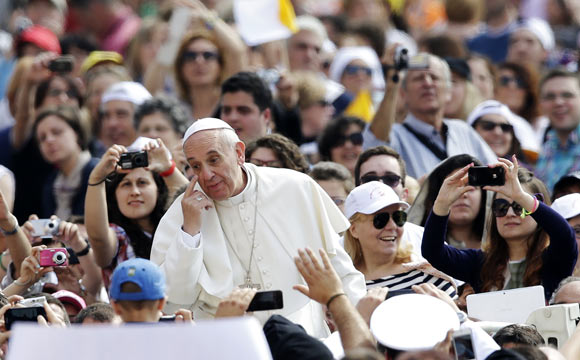
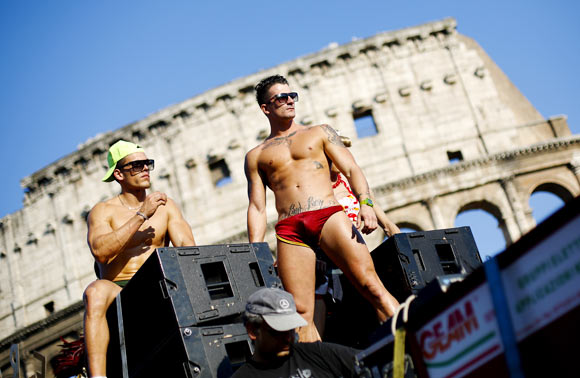

Comment
article